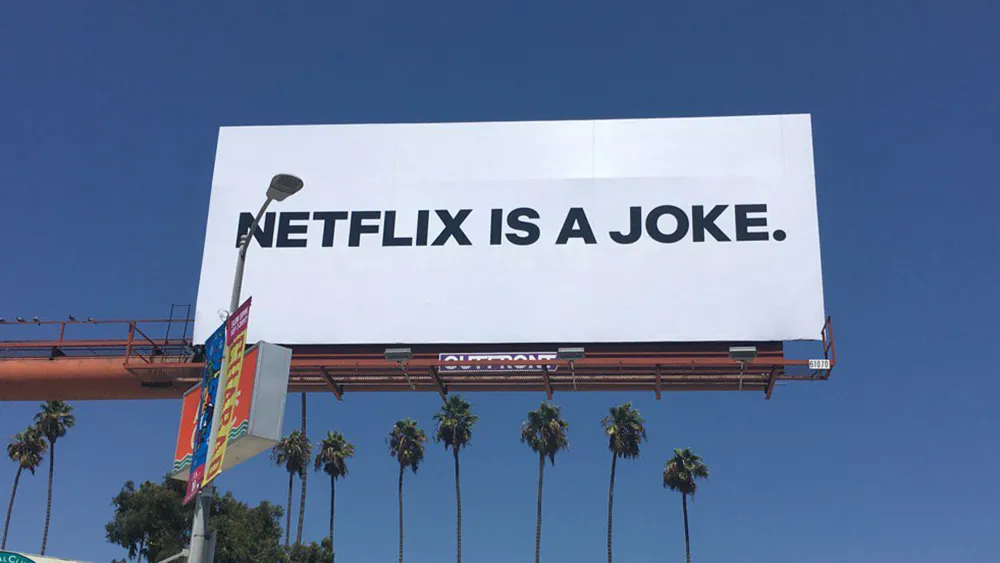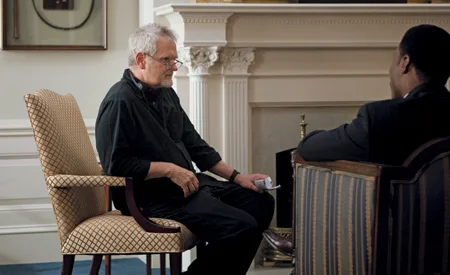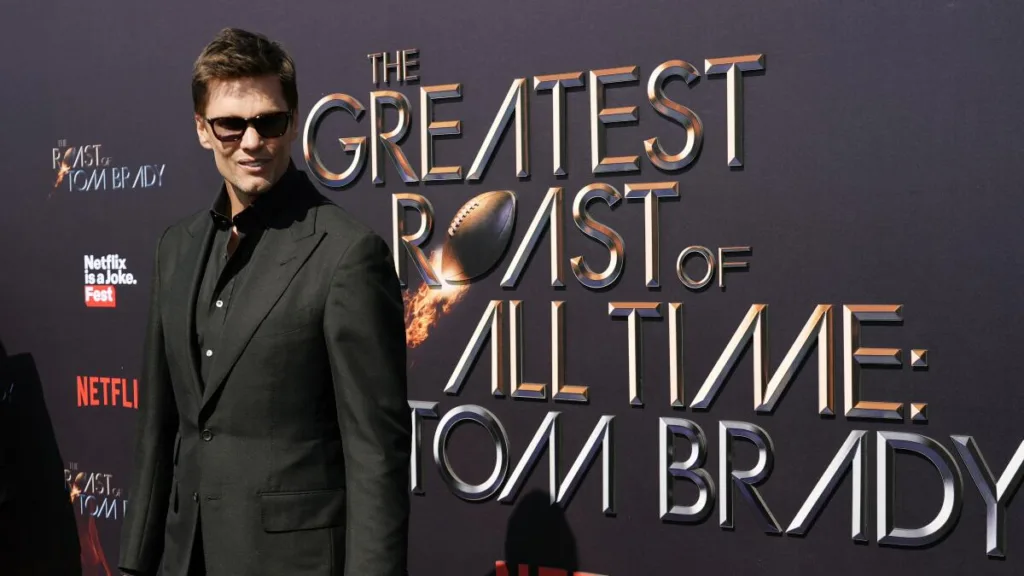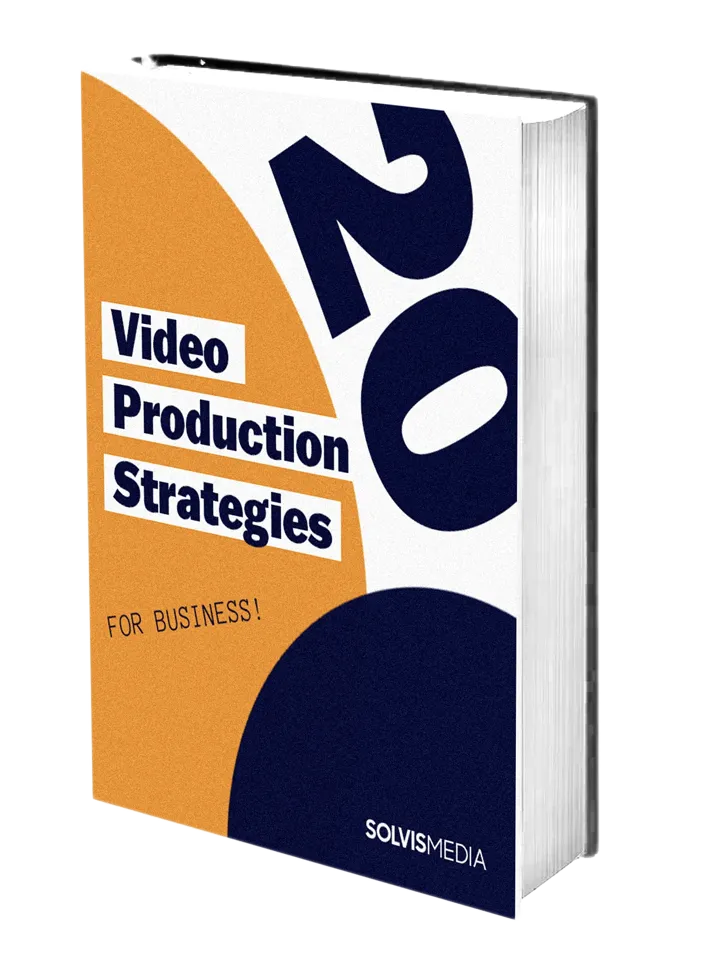In the 17 years since Netflix started streaming to today, only two companies out of the hundreds of streaming services have managed to become measurably profitable at all. And those two are Hulu and Netflix. Hulu claims to be profitable. I believe them, but I couldn’t get any solid figures on Netflix. Meanwhile, Netflix reported a profit of nearly $5.4 billion in 2023.
This is a transcript from the 15-Minute-Marketing Podcast, available on all platforms
Netflix is really interesting to me because they’re beating these mass media companies at distribution, keeping customers around, and importantly, profitability. Even when it seems like everyone has Netflix, like everyone I know has Netflix, everybody you know has Netflix, in quarter one of 2024, they added 9.5 million subscribers.
How are they beating the competition, which has more money, more tools, more content at their disposal? We’re going to get into that today.
This is the 15 Minute Marketing Podcast presented by Solvis Media.

Beginnings
They started as a DVD by mail rental company in 1997, and they started streaming exactly ten years later in 2007. Then ten years later in 2017, they did something in their marketing and product development that completely differentiated themselves from the pack, which I’m really excited to be talking about today. But first, some important context. Broadband internet was becoming faster and streaming was becoming possible. Reed Hastings, their CEO at the time, said, “We knew that the DVD rental business had a limited lifespan. Streaming was a way to futureproof Netflix and stay ahead of competitors who were still focused on physical media.”
House of Cards and Original Programming
Netflix began experimenting with streaming as early as 2007. Neil Hunt, who was the chief product officer at the time, said, “We started small with streaming, but we quickly realized the potential. Our data showed us that once people started streaming, they watched more and explored more content than they did with DVDs.” That was part of the reason for the switch entirely to streaming, which was in 2010, about three years after they started rolling streaming out. Then just three years after that, they spent $100 million on producing one season of “House of Cards,” their first piece of original content.
For “House of Cards,” they actually took user profiles and made different trailers depending on what the user profiles’ preferences were. For example, they would cut a trailer to feature more female characters and then market that to profiles who preferred seeing strong female characters, which is awesome.
Right now we’re in 2013. “House of Cards” becomes wildly successful. But I’m going to fast forward because Netflix had this really insane jumpstart when it came to being first to market. By 2020, everybody was launching streaming services. It felt like one service a week was launching only a few years ago. As time went on, it went from people celebrating this to kind of a collective groan.
Using Data-Driven Decisions to Influence Product Development & Marketing
This is why I decided to do this episode. They’re going against these 100-year-old companies that have been doing distribution since the dawn of film even being a thing, which is awesome. Skipping forward to 2017, facing more competition now, what do they do?
Great marketing is always preceded by the redevelopment or creation of a phenomenal product. This is really what sparked this episode. I had watched the roast of Tom Brady, and I immediately remembered the campaign they did in 2017, which is still going on today. This was called the “Netflix Is A Joke” campaign.
It’s my firm belief that this “Netflix Is A Joke” campaign was not only genius just from a shock jock type of ad campaign at first, but also the product itself was so smart, just from a video producer’s angle. I’m going to get into that.

The Netflix is a Joke Marketing Campaign – What is it?
Netflix Is A Joke essentially was this really heavy focus on comedy as one of their real niche genres. I don’t know, I saw somebody arguing about how to pronounce that online. I’ll do both pronunciations. Niche or niche, I don’t know.
I asked myself, why comedy when I was really starting to get into this? Why did Netflix focus so much? They have their own Instagram account just for Netflix Is A Joke, which is just for comedy. They’ve really focused and spent a lot of money on comedy. So I was asking myself, why?
First of all, they focus heavily on data. They analyze viewing patterns on Netflix and audience engagement. They identified a really high demand for comedy specials. Then they focused heavily on comedy more than any other service. This goes back to their roots. A lot of what they do is influenced by data. Ted Sarandos, who at the time was the chief content officer, now he’s the CEO, said, “Our data showed a strong and growing appetite for stand-up comedy. This insight drove our decision to invest heavily in comedy specials and secure deals with some of the biggest names in the industry.” He said, “Data is at the heart of everything we do at Netflix. It helps us understand our audience’s tastes and preferences, allowing us to make better decisions about the content we create and acquire.”
Beyond just the data and the customer preferences, this is where the hidden genius is. As a video producer, I understand the associated costs and economics behind everything. A lot of comedy is dirt cheap to produce in comparison to feature film quality shows or feature films in general.

The Economics
For example, they spend up to $10 million per hour-long episode on a show like “Bridgerton.” Remember, they spent about $100 million on one season of “House of Cards.” That’s pretty commonplace. But here’s the key difference. They’re spending $10 million on a one-hour episode of a TV show. An hour-long comedy special could cost only about $100,000 to $300,000 to produce. Obviously, it’s going to cost a little bit more to license, but it’s not going to cost nearly as much as $10 million for one hour of content. It’s going to cost a lot less, only about a million for licensing deals.
More than half the time they’re giving comedians licensing deals. They’re not giving them exclusive deals where Netflix produces the content. The comedian pays to produce it. Netflix licenses it for about three years for a small fee, around $1 million, a little bit more, a little bit less, give or take.
The licensing deals are actually favorable to both the comedians and Netflix. The comedians will own the content three years after it’s done. That’s how these licensing deals work. You don’t get as much money as an exclusive deal, and at the same time, you also have to self-produce.
But three years after it runs on Netflix, you get to own the special. They can later on sell it on their website, they can upload it to YouTube, all that stuff. They’ll own their work, which is huge for many artists who want some semblance of control of their work.
But in that three-year time span, Netflix gets an hour of great content for relatively cheap, and it’s hugely beneficial from a marketing perspective as well. Comedy has this very wide audience, right? It’s a very diverse range of demographics, and it really all depends on the comedian too. You could think of the fans of Amy Schumer versus the fans of Bill Burr. They’re completely different demographics. Although I’m sure some people love both comedians. Comedy’s great for this kind of cross-promotion stuff.
Cross Promotion Between Both Parties
They have these wide, already captivated audiences, people who are willing to spend a bit to access their content, like Patreon shows, merchandise, that type of stuff. Netflix does too. That could cheapen the licensing fees for smaller to mid-range comedians. They’re bringing the massive Netflix subscriber base to their comedy. These smaller to mid-range comedians are bringing their fans to the Netflix platform.
On top of that, there’s not a lot of big money investors in comedy. Most of these streaming services aren’t as committed to the bit, which is a little joke there. These other streaming giants are almost solely buying or producing the majority of content. They’re not licensing it. That’s the huge difference, which makes it a lot more expensive. Netflix does self-produce and they do exclusive deals when they’re worth it, like Dave Chappelle, for example. Obviously, $30 million to Tom Brady to do the roast, which is another great example.
Now the marketing angle. This is the 15 Minute Marketing Podcast, not the 15 Minute Product Development Podcast. I actually might go a little bit over on this one, I’m sorry. The reason I really wanted to get into this was whenever I do these deep dives, I always find something even more interesting than just the marketing.
Rarely do you find these campaigns. It’s like, oh, it’s just a campaign. It’s always a genius idea or some innovative product or some sort of other development in the company that leads to the success of a great marketing campaign. This is awesome. We looked at Subaru and how their marketing and product development is really influenced only by the type of people who bought the car and how they don’t really try to gain new ground.
Then we looked at Domino’s and how they elevated the negative comments, embraced their flaws, which led to a really authentic campaign. Both of these had to come from great products. Or in Domino’s case, they reformulated a poor product and then with some help from their great customers. It’s always about the customer.
In Netflix’s case, the customer gave them the great data. They used this to invest in comedic content and then to market to this base of comedy fans. That’s the great product. The genius product is the cheap-to-produce, always fresh comedy genre. They did a great job marketing this because I remember when this came out and I was like, wait, what?
The Marketing Methodology
Who’s dissing Netflix? It turns out Netflix was dissing Netflix. I was like, oh my God, this is awesome. The chief marketing officer said, this is Kelly Bennett, the former chief marketing officer, “The goal was to create a campaign that was both surprising and memorable. Netflix is a joke started off as a bit of a head-scratcher, but it quickly became synonymous with our commitment to comedy.”
They started with these very cryptic billboards that popped up everywhere saying “Netflix is a joke.” The agency that did them, Battery, said this, “Our campaign launched with stark black and white billboards with four simple words: Netflix is a joke. These boards were strategically placed near industry press and influencers in LA and New York. Media and social chatter began speculating whether these boards were a prank or a competitor smear campaign.”
What started with four words on a billboard almost four years ago continues to serve as a platform for all things comedy at Netflix today.
Influencer Marketing
You could consider it influencer marketing as well. As I said earlier, they do licensing and exclusive partnerships with high-profile comedians. There’s a lot of cross-pollination there with the middle-of-the-road comedians helping them gain audience.
Influencer marketing is key. They now do this Netflix Is A Joke Festival, which is a huge event. They feature comedians, do a bunch of stand-up. It’s a whole weekend thing, really cool. They do it out in LA. They’ve created a separate Instagram account, which now has 2.5 million followers. Everything comedy-related is being put there, which is a really smart play because it’s really difficult as a generalist account and a team of specialists on social media.
This was a smash hit. Q1 of the year following the campaign, Netflix’s revenue surged by 14.8% year over year to $99.3 billion, with net income rising 77% to $2.3 billion. Obviously, a resounding success.
Focused Instagram Account
They made a separate account. They post comedy clips every single day, reels, stuff like that. These things are really great. I truly believe stuff like this is why they’re one of the only profitable streaming giants.
They’re able to have fresh content every month because comedians are just putting out specials left and right, and they’re gaining audiences, they’re gaining traction, which is awesome.
How do we apply this? Last week I said to be bold, which isn’t that super general where, listen, we’re not all Netflix. We don’t have massive global reach or tens of hundreds of millions to spend on high-profile endorsements. But I do think we can take something away from this. I have five key things to apply right here.
Using Netflix’s Strategies in Marketing and Product Development
One, listen to your customers. I feel like we always find ourselves coming back to this one. With Subaru, it was more intuition. With Domino’s, it was just literal feedback, like “this pizza sucks, it tastes like cardboard.” That’s a pretty easy way of fueling a comeback campaign. With Netflix, they used customer data and did this quietly for a while. That influenced their decision-making with the product. Takeaway one, listen to your customers.
Two, make sure your social media channels are focused. This is huge and something personally I need to work on a little bit more. Work on creating more focused pages or content on your pages. If you need any inspiration, just look at the Netflix page versus the Netflix Is A Joke page on Instagram. It’s okay to have multiple accounts in order to have more focused feeds if you have different demographics and different target audiences within your own company. It’s a smart play.
Three, look for cross-pollination opportunities. Local influencers, podcast marketing. You could lower the cost of advertising there if you’re helping both parties out. If you’re doing an ad and your ad is on a podcast that’s not necessarily relevant to what your business does, it’s probably just going to cost you a normal flat rate. But if you have the opportunity for some level of cross-pollination between a podcast that’s more relevant to your genre, and then you could help them out in certain ways, instead of it just being a transactional thing, you know, you could also see now, like comedians really gravitate towards Netflix because they’ve treated them well and helped them grow their audience. Looking for cross-pollination opportunities in marketing is huge.
Four, slogans can do a lot. My slogan isn’t nearly as punchy as Netflix’s, but it does intrigue more than what I could have gone with. My slogan is “All Roads Lead to Video.” I could have done something simple like “high performing video for high performing brands.” But “All Roads Lead to Video” makes people start to wonder, “What does that mean?” I just say, it’s hard to make an emotional connection today in the digital world because it’s next to impossible to effectively communicate our values and who we are clearly or authentically to customers through just text or even photos. Video doesn’t just make it easier to communicate these things, but it’s night and day different. It’s completely different. It has a double meaning. All roads lead to video, all roads over the years in terms of creating the best ways of telling a story, they’ve led to film and video. In today’s space, the digital space, connecting with customers, all roads lead to video. Whether it be YouTube, your website, social media, any channel, they’re all optimizing for video, even LinkedIn, even Spotify, which is an audio platform. But now you can use video on there as well. All roads lead to video is my slogan, which definitely creates some intrigue. That’s how that conversation sparks from there.
Five, in terms of events, Netflix Is A Joke Fest is great. Events are huge. You want to find something that’s relevant to your company and create an event around it. You can get a lot of buzz going on, and it’s an excellent opportunity to get content as well.
I’m going to blend this with the outro as well. One day I’d love to make some sort of success summit with top CMO and marketing professionals in attendance, which is one of the reasons why I’m trying to grow out this community. If you’ve come from LinkedIn or Instagram or YouTube, I’m trying to make this a place for marketing in a quick, digestible format, and I try to make it under a 15-minute commute. This episode might be more like 20 minutes. If you got something out of this episode and you feel like someone else would benefit from learning a little bit about what Netflix did, I’d love it if you could share it with someone you think would get a lot out of it.
This is Liam Bennett. Thanks for listening. I’ll see you next week.

